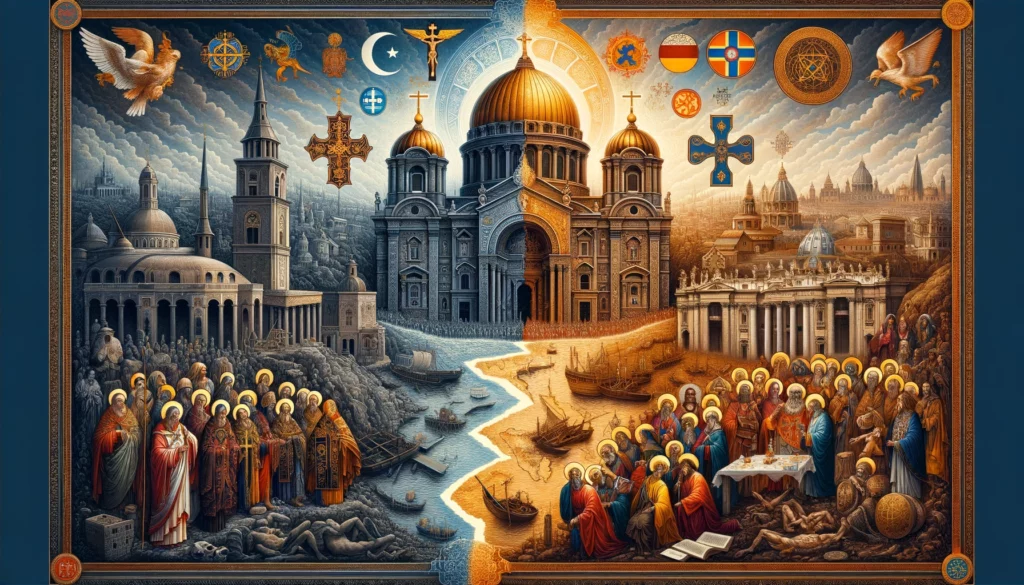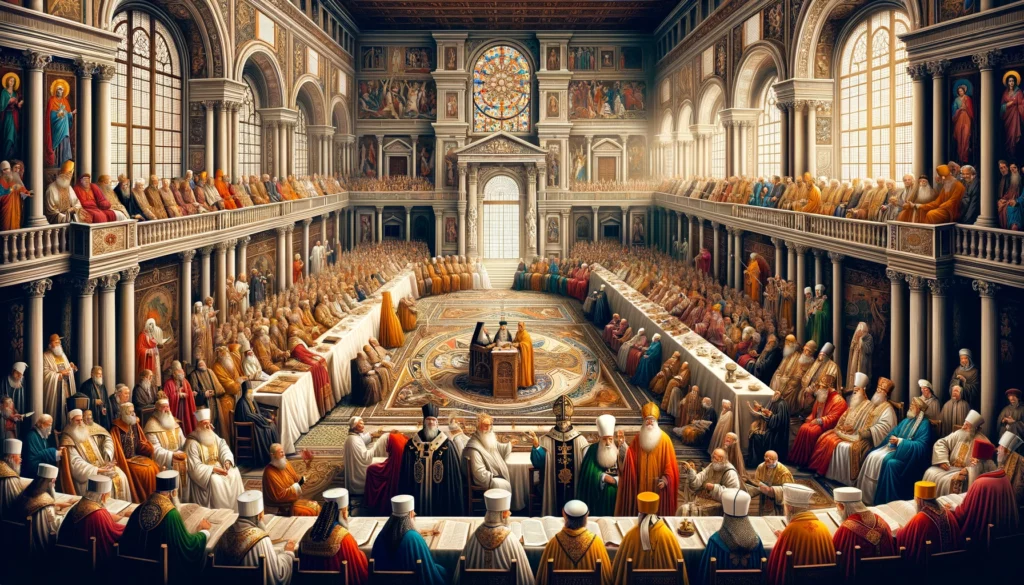Have you ever considered a single event that could split the world in two? Imagine a clash not of armies, but of beliefs and ideas, strong enough to divide a millennia-old institution. This is the story of the Great Schism, a pivotal moment in history that forever altered the religious and political landscape of Europe.
The Event
In 1054, the Christian Church, which had been a singular entity, split into two branches: the Eastern Orthodox Church and the Roman Catholic Church. This schism didn’t happen overnight. It was the culmination of theological, political, and cultural disputes that simmered over centuries. The bone of contention ranged from the use of leavened or unleavened bread in the Eucharist to the authority of the Bishop of Rome.
Why It Matters

Understanding the Great Schism is crucial for several reasons. First, it offers insight into how deeply-held beliefs and traditions can shape world events. Second, the schism paved the way for significant geopolitical changes in Europe. Lastly, it provides a backdrop to many modern religious and cultural tensions.
The Reasons Behind the Schism
The Great Schism, a watershed moment in Christian history, didn’t arise from a singular event but was the result of a complex web of theological, political, cultural, and personal factors. Here’s a more detailed look at these elements:
Theological Disputes
- Filioque Controversy: One of the central theological disagreements was over the Filioque clause (“and the Son”) added to the Nicene Creed by the Western Church. The Eastern Church argued that this addition, made without a general council’s consensus, was both unauthorized and theologically incorrect, as it implied a difference in the nature of the Holy Spirit’s relationship with the Father and the Son.
- Leavened vs. Unleavened Bread: Another point of contention was the type of bread used in the Eucharist. The Western Church used unleavened bread, viewing it as symbolic of the purity of Christ, while the Eastern Church used leavened bread, seen as symbolic of the living nature of the Eucharist.

Political Power Struggles
- Rivalry of Empires: The tension between the Byzantine Empire in the East and the newly established Holy Roman Empire in the West played a significant role. This rivalry extended to the churches, each aligned with its respective empire, leading to a power struggle over religious and secular authority.
- Role of the Papacy: The Western Church’s insistence on the Pope’s supreme authority over all Christendom, including the Eastern Church, was a major sticking point. The Eastern Church, valuing a more collegial and consensual approach, vehemently opposed this claim.
Cultural and Linguistic Divergences
- Language Barrier: The linguistic divide between the Greek-speaking East and Latin-speaking West affected theological interpretations and communication. Each side often misunderstood the other’s theological nuances due to language differences.
- Cultural Practices: Differing liturgical practices, rules of clergy, and religious customs also fueled misunderstandings and suspicion. These differences became symbolic of deeper cultural divides.
Pivotal Personal and Historical Events
- Crowning of Charlemagne: In 800 AD, Pope Leo III crowned Charlemagne as the Holy Roman Emperor. This act was seen by the Byzantine Empire as a direct challenge to their religious and secular authority, further straining relations.
- Mutual Excommunication: The climax of these tensions was the mutual excommunication in 1054. The representatives of Pope Leo IX and Patriarch Michael I Cerularius exchanged excommunications, symbolizing the official split. This act, though later rescinded, marked the point of no return for the two churches.
Lessons and Reflections
The Great Schism reminds us of the complex interplay of religion, politics, and culture in shaping history. It’s a testament to the enduring impact of ideological divisions. As we reflect on this event, consider this: How do present-day religious and political divides echo the past, and what can we learn from history to address them?